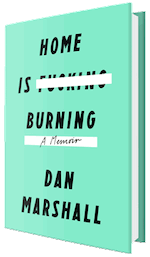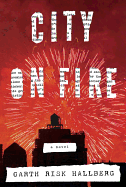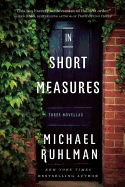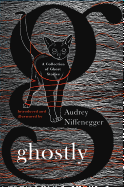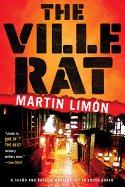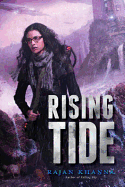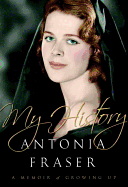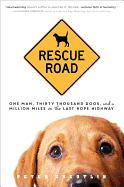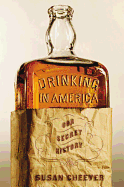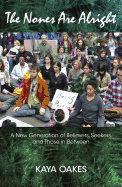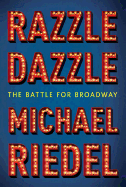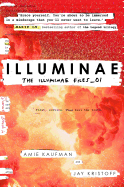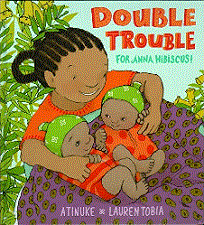 |
| photo: Sharon Suh |
Dan Marshall grew up in a nice home with nice parents in Salt Lake City, Utah, before attending UC Berkeley. After college, Marshall went to work at a strategic communications public relations firm in Los Angeles. At 25, he left work and returned to Salt Lake City to take care of his sick parents. While caring for them, he started writing detailed accounts about many of their weird, sad, funny adventures. Home is Burning is his first book. He is currently working on adapting it into a screenplay.
Your Facebook notes and blog posts fed into what became the book. What is the writing process like when you have all that material to start with?
It was a fairly unique process. The blog was mainly shorter posts: funny conversations, short stories and a lot of lists. When I decided to write the book, I aggregated all the blog posts, and then read through them. The blog was a lot cruder than the book (if you can believe it), and was focused more on trying to make people laugh than on the sentimental moments from the story. So a lot had to change.
The blog also didn't really have a theme other than, "S**t is bad." So in reviewing all the material (about 900 pages worth), I had to figure out first what I was trying to say with all this writing--what theme or message I was trying to get across. I started to realize that it's really a story about a selfish, spoiled kid finally facing something real, and thus being forced to sort of grow up. Once I realized that, it was a little easier to know what should stay from the blog and what should go. So I started trimming it down, cutting parts that didn't push the story forward or relate to the theme, and adding a few parts that helped to fill in some of the gaps that I didn't cover in the blog.
Overall, it was a tedious process.
Was writing this book terribly painful or cathartic?
Certain things--like when my dad announced his desire to die, the Abby break-up, my dad's eventual death--are always painful to relive and write about. I usually had to take a lot of walks while working on those sections to calm myself down.
Also, the voice I write in is rather dark and sad. So, getting into that morbid headspace is always painful. Whenever I was jumping into a rewrite or going through the book again, I would tell myself, "Okay, you're going to be sad and feel like shit for a couple of months," then start writing.
However, writing the book was also really cathartic, especially when I discovered the themes of the book. It was like, "Wow, that was horrible, but I learned a lot." You learn more from pain than pleasure, so I think writing the book made me wiser. I'm a lot smarter than my friends with living parents.
This is going to sound sappy, but the book was also an opportunity to hang out with my dad again. I could bring him back to life and relive some happy memories. So, that aspect of it brought me a lot of joy. Then, each time I'd finish writing, I'd miss my dad even more. So, I'd fall into a bit of a depression for a few weeks. Nothing that a few burritos can't cure, though.
Are you this amazingly self-deprecating in real life?
I start everyday by looking in the mirror and booing. Just kidding. I don't do that.
But I do have a genuine hatred for myself that runs deep. I feel like a little self-hatred is healthy, but I probably overdo it. I'm pretty hard on myself, which is funny on the page, but sort of a drag to live with. I feel really worn down by myself all the time. Sometimes I want to yell, "Leave me alone!" at myself.
I think self-deprecating humor is a defense mechanism because I figure if I think the worst about myself, then I can't be shocked by anything bad anyone says about me. I do need to work on being nicer to myself. Whenever I'm going on a self-deprecating tangent, my mom always says, "Stop saying so many mean and hurtful things about someone I love." I should follow her advice.
You share an awful lot of painful personal detail here, both your own and others'. How do you decide where to draw the line? Do you draw a line? Was your family involved in those decisions?
In writing this, I made a commitment to revealing everything and being as open and honest about the experience and my life as possible. I don't think it'd be that entertaining to read if I were holding back.
Also, I wanted people to know what it was actually like to care for a person with Lou Gehrig's disease. It's such a horrible disease, and I think if people were aware of what actually goes into caring for someone with the illness, then more people would donate money toward trying to solve the ALS puzzle. You wouldn't think it, but like 60% of the care you do for someone who is bedridden is bathroom stuff. So I figured I needed to address all that to give readers the full experience.
When it comes to stuff about me, nothing is off-limits. When it comes to stuff about others, I try to be a little more selective. It's so hard to have some a**hole write about you, so if someone asks me to take something out of the book, I usually do. But I do try to push it. I often ask, "How much can I reveal about this person and still have them love me?" It varies from person to person. My brother Greg is a writer, so he's basically okay with anything about him.
My sisters and mom, however, were a little taken aback when they first read the book. My mom's initial reaction was, "F**k you Danny and f**k your book." She's since forgiven me and has been incredibly supportive of the book.
Generally, though, my family has been really good sports about this. They realize that this is a story about our dad more than anything. And they realize that I'm as hard on myself as I am them.
You relate some shocked reactions to your off-color and morbid sense of humor generally. What reactions do you anticipate to the book?
I think the book will get a mixed reaction. Some people will probably really enjoy it. And some people will absolutely hate it. I find that people over 80 tend to not get my sense of humor, so I doubt I'll be asked to do readings at retirement communities or in Florida.
I'm prepared for all of my Mormon friends to hate me when the book comes out. In fact, I probably won't be allowed in the state of Utah anymore. I always get a little nervous when a Mormon friend tells me they've pre-ordered the book. I try to be especially nice to them so we can hopefully remain friends. I actually really love Mormons now. I didn't for a long time, but I realized through this that they're also just trying to get through life.
But I hope people see what I was going for. I know it's crass, and crude, and contains South Park humor, but I hope they see past all the language and realize that at the core of it, this is a story about a guy learning to love his family and learning how to grow up.
As a screenwriter, can you tell us what rating this book will receive onscreen?
It will receive an R-rating for sure.
What's next?
I try to keep busy because I'm not good at having hobbies so I get really anxious and bored when I'm not working. I'm working on the Home Is Burning adaptation for New Line Cinema now. Miles Teller is attached to play me, and Jonathan Levine is directing.
I have a few other film projects I'm working on. One is a script called F**k Me, I'm Paralyzed (inspired by a true story) about a friend helping his paralyzed friend try to get laid for the first time since his accident. We're hoping to film in early 2016.
I'm also planning on writing another book that focuses on what life has been like after my dad passed, sort of an exploration about how to deal with moving on from loss and rebuilding yourself--trying to find happiness without the people who made you happy. --Julia Jenkins
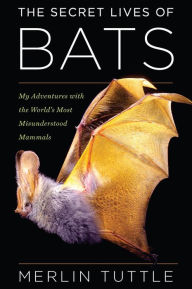 October is, no surprise, official Bat Appreciation Month. There are more than 1,300 species of bats worldwide; they range from cute to strange to scary; they aid farming by eating insects, thus reducing the need for pesticides; they pollinate plants; and, according to Merlin Tuttle, founder of Bat Conservation International, they are gentle, cuddly creatures with off-the-charts intelligence and sophistication. Tuttle has just written The Secret Lives of Bats: My Adventures with the World's Most Misunderstood Mammals (Houghton Mifflin Harcourt, $26), which begins with his first bat cave exploration as a teenager, when dozens of gray bats landed on him, seeking places to hide. Many people would have run screaming from the cave, but Tuttle was captivated, as readers of this book will be as he explains his fascination.
October is, no surprise, official Bat Appreciation Month. There are more than 1,300 species of bats worldwide; they range from cute to strange to scary; they aid farming by eating insects, thus reducing the need for pesticides; they pollinate plants; and, according to Merlin Tuttle, founder of Bat Conservation International, they are gentle, cuddly creatures with off-the-charts intelligence and sophistication. Tuttle has just written The Secret Lives of Bats: My Adventures with the World's Most Misunderstood Mammals (Houghton Mifflin Harcourt, $26), which begins with his first bat cave exploration as a teenager, when dozens of gray bats landed on him, seeking places to hide. Many people would have run screaming from the cave, but Tuttle was captivated, as readers of this book will be as he explains his fascination.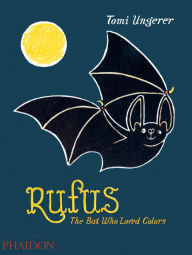 Tomi Ungerer's unusual picture book, Rufus: The Bat Who Loved Colors (just reissued by Phaidon), has been flapping around winning hearts since it was first published in 1961. Rufus the bat loves colors so much he paints his feet violet and his ears pink. Unfortunately, when he flies out into the sunlight, he is shot down from the sky by frightened onlookers. Fortunately, he lands in the tulip garden of Dr. Tarturo, a collector of rare butterflies, who becomes the unconventional bat's friend for life.
Tomi Ungerer's unusual picture book, Rufus: The Bat Who Loved Colors (just reissued by Phaidon), has been flapping around winning hearts since it was first published in 1961. Rufus the bat loves colors so much he paints his feet violet and his ears pink. Unfortunately, when he flies out into the sunlight, he is shot down from the sky by frightened onlookers. Fortunately, he lands in the tulip garden of Dr. Tarturo, a collector of rare butterflies, who becomes the unconventional bat's friend for life.


